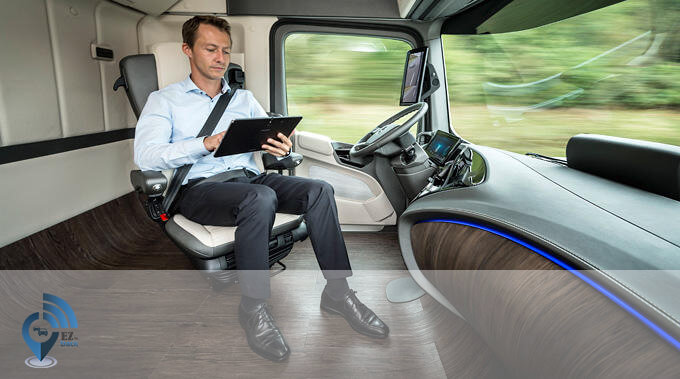Every day we hear more and more about new inventions, like autonomous trucks. But what does this mean for all those businesses that rely on their fleet of vehicles?
Autonomous vehicles can guide themselves without human conduction. This kind of vehicle has become a concrete reality and may pave the way for future systems where computers take over the art of driving.
This innovation is also known as a driver-less vehicles or self-driving vehicles. They use various kinds of technologies. It can be built with GPS sensing knowledge to help with navigation. They may use sensors and other equipment to avoid collisions. And also, have the ability to use a range of technology known as augmented reality, where a vehicle displays information to drivers in new and innovative ways.
Autonomous trucks in the transportation industry will bring a lot of changes for the businesses that rely on their fleets. In few years, from economic point of view, is expected for many companies to turn on autonomous fleets. All in order to cut their expenses and improve their time management. Innovations like this are accepted because of the financial expectations they provide. But we should not forget that self-driving and safety advances should not be viewed separately. The true advantage in deploying advanced driver assistance systems (ADAS) lies in their ability to dramatically reduce the number of accidents.This occurs with every incremental piece of safety technology.
The economics for the trucking industry in terms of cost savings is more compelling than for consumer vehicles. Drivers, i.e. account for about 33% of trucking operating costs, according to analyses at Stifel Financial Corp. Eventually, self-driving trucks will just be a set of wheels, a frame, an engine and a computer. This way manufacturers will be able to scale down the size and weight of the truck. Which will allow carriers to haul heavier loads and higher rates per trip.
IHS Automotive analysts
They estimate that annual sales of heavy-duty autonomous trucks could reach 600,000 units annually by 2035, beginning with several thousand deployed in 2020. Depending on road and traffic complexities, Level 4* High Automation mode with ‘high automation’ on parts of Interstate highways, is predicted to be achieved by 2022. In other, less advanced scenarios, the vehicle may only operate in Level 2* Partial Autonomous mode, such as on city streets.
* Here are the SAE J3016 Levels of Automation for on-road motor vehicles:
- 0 Level – No Automation
The full-time performance by the human driver of all aspects of the dynamic driving task. Even when enhanced by warning or intervention systems.
- 1 Level – Driver Assistance
The driving mode-specific execution by a driver assistance system of either steering or acceleration/deceleration using information about the driving environment. With the expectation that the human driver performs all remaining aspects of the dynamic driving task.
- 2 Level – Partial Automation
The driving mode-specific execution by one or more driver assistance systems of both steering and acceleration/deceleration using information about the driving environment. With the expectation that the human driver performs all remaining aspects of the dynamic driving task.
- 3 Level – Conditional Automation
The driving mode-specific performance by an Automated Driving System of all aspects of the dynamic driving task. With the expectation that the human driver will respond appropriately to a request to intervene.
- 4 Level – High Automation
The driving mode-specific performance by an Automated Driving System of all aspects of the dynamic driving task. Even if a human driver does not respond appropriately to a request to intervene.
- 5 Level – Full Automation
The full-time performance by an Automated Driving System of all aspects of the dynamic driving task under all roadway and environmental conditions that can be managed by a human driver.
2017 is expected to be the year of the autonomous trucks. So this can mean improved truck transport, optimization of the fuel spends and increased safety. Contact us for more details how to adapt your smart fleet!


